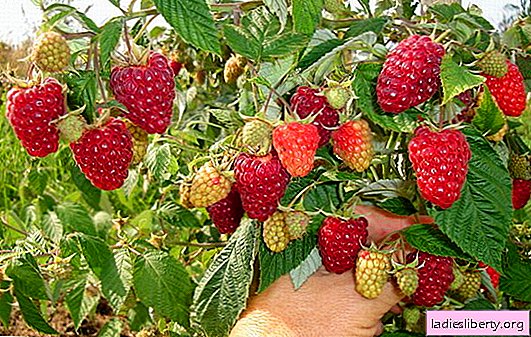
In many plants, pinching the ends of the shoots increases the yield, but for the melon this operation is extremely important, otherwise ripe fruits can not be seen. It seems that pinching a melon is not difficult - it shortened the end of the shoot, and then you can not interfere with the growth of the plant. But in fact, with a pinch, made in accordance with all the rules, you need to tinker.
The reason is that in this culture female inflorescences are formed on third-order shoots, after which an ovary grows on them. When forming a melon bush, it must be remembered that only one fruit should grow on one lash. There should be no more than 6 of them on the whole plant; up to 4 fruits can be left on large-fruited melon varieties. Pinching a plant at the initial stage of growth, do not forget that as many fruits will grow as you leave third-order shoots.
What will pinching melon
The pinching (pinching) of the ends of the lashes of melon is of great importance for a decent harvest. Without using such an agricultural technique, you lose a lot.
After this operation, the rudiments of the lateral lashes are formed in the axils of the leaves (where the ovary grows). And nutrients begin to be used not for the growth of shoots, but for the loading of fruits that ripen a week earlier.
The fruits will grow sweet and large, compared to melons on unformed plants. On unformed melons, the crop may not grow at all, due to the fact that the side shoots grow little, and the ovary does not always appear on them.
Melon seedling formation
Melon seedlings are pinched for the first time in the phase of formation of 4-5 leaves. As a result, lateral shoots begin to develop in their sinuses.
After this, the formation of plants depends on how the lashes of the melon are located in a constant place - horizontally or vertically.
Growing in a greenhouse (vertical)
In protected buildings, this culture is grown in one stalk, removing all side shoots. They are pinched after the central shoot has grown to the top of the greenhouse (about 2 m). Lateral shoots are shortened above 2-4 leaves, leaving 2 leaves over the ovary, if it is not there, then the shoot is cut off.
Recommendation! When vertically forming a melon bush, hang the fruits (if they formed above the surface of the soil) in mesh bags so that they do not break off under their own weight.
In the greenhouse, pay attention to pollination, as the humidity is higher and the access of bees is limited, compared with the beds in the open. For this reason, pollinating inflorescences is better on their own. Otherwise, an ovary from inflorescences may not appear.
Growing on a bed (horizontal)
So the melon is grown mainly in open ground, it is not suitable for greenhouses because of the small area, possible disease of plants due to high humidity (which will necessarily appear in the greenhouse filled with shoots of melon) and poor illumination of the bushes. When plants are formed into 3 shoots that appeared after the first tweezing, the 2 strongest of them are left, they are shortened over 4-6 leaves.
One more time this operation is performed during the formation of the ovaries:
• Cut off non-fruiting and weakened lashes;
• Above 3-4 sheets over the ovary, pinch the lashes;
• Injured places sprinkled with a mixture of lime, sulfur and charcoal (in equal proportions).
Early and late picking
For early varieties, it is enough to pinch the central shoot and limit the number of ovaries on the plant. Such melons are sung quickly, they need less nutrients than for late-ripening varieties.
The formation of late varieties consists in a strong pruning of shoots; fewer fruits are left on such plants, this will accelerate ripening and preserve the strength of the plant.
Late melon formation pattern:
1 pinching - during the appearance of 4-5 of this leaf - before disembarking at a constant place - remove the growth point above 4-5 leaf
2 pinching - during the appearance of 7 leaves, the plant that has taken root after transplantation - remove the growth point above 7 leaves, unnecessary inflorescences and ovaries are torn off in the sinuses
How to further form melons
Cutting off excess shoots and removing unnecessary ovaries is done before the fruit ripens, all the while the side lashes grow, inflorescences and ovaries appear on them. To grow tasty and large fruits, you need to regularly pick off the flowers and stepsons that appear. This will quickly gain weight and ripen the left fruit. The less you leave melons on the plant, the faster and larger they will grow. All green mass, take away part of the forces and nutrients that are needed for growing melons.
Advice! Having planted the melon in the garden, control the direction of the shoots, place them so that they do not interfere with each other.
The sequence of actions during the formation of melons

1. You need to wait until 4-5 real leaves grow near the bush. The main shoot is pinched above them, after which the side shoots will quickly grow on the plant. It is necessary to leave no more than 5 lashes on the bush, later fruits will grow on them;
2. On adult melons, the growth point is removed so that the plants use nutrients effectively, not to increase the vegetative mass, but to form a crop;
3. The lateral shoots that appear are left by the strongest others, they are torn off, the lower lashes are cut off. Left shoots shorten over 4-5 leaves;
4. After the entire bush is formed, you need to examine the ovaries and leave 4-6 of the best. It is best to leave the lashes on which the fruits are located near the central stem, so that the nutrients of the nutrients will be better fed to the fruits. Unnecessary ovaries are cut off after the diameter of the melons reaches the size of a medium walnut;
5. When everything is done, you need to wait 15-20 days, during this time new shoots will appear on the plants, and the fruits will grow a little. All new shoots are pinched above 4 leaves. After that, caring for the melon consists in laying under the poured fruits scraps of plywood or wooden boards, which will prevent the appearance of rot on the fruits from exposure to soil moisture.

Possible mistakes
Often beginner gardeners try to pinch a melon, as well as a watermelon. But the fact is that on a watermelon the fruits appear on the central stem, and on the melon they form exclusively on the side lashes. For this reason, breaking off the side lashes, you can remain completely without a crop.
Shortening only the side shoots is another big mistake. The central stem, on which the fruits do not appear, will take strength from the entire bush, and they are needed for the development and ripening of the fruits.
Pinching does not help plants planted too thickly, the formation of shoots is complicated by the lack of free space. Plants will suffer from a lack of light, and the risk of disease will increase.











